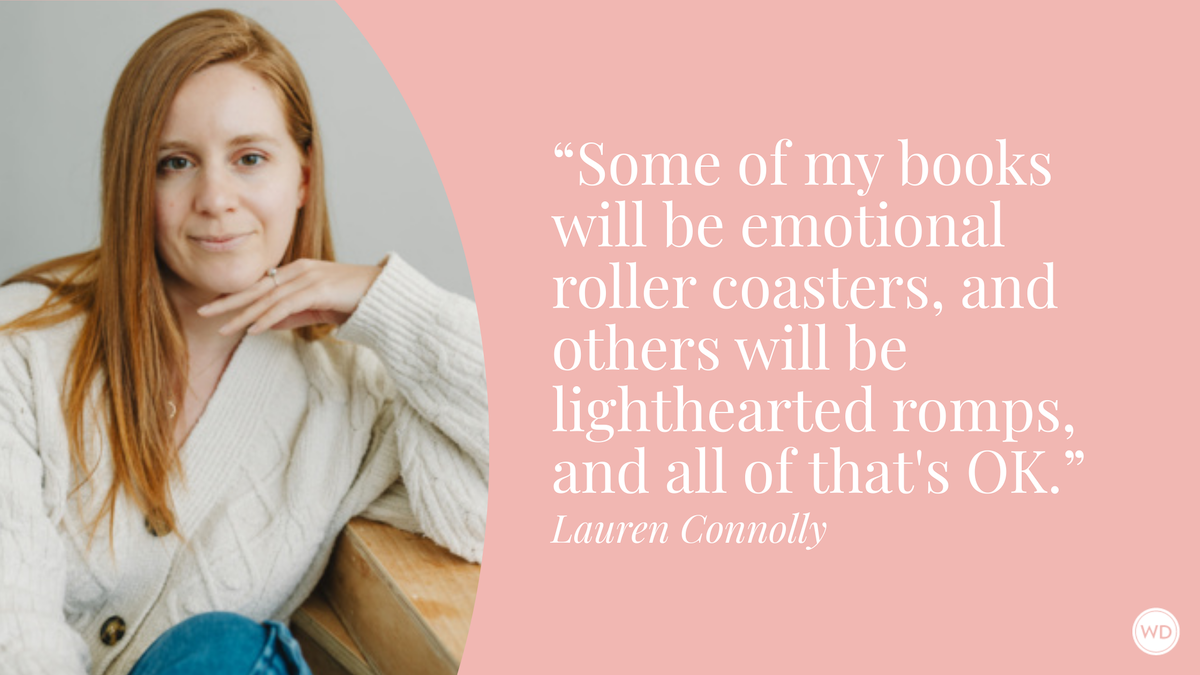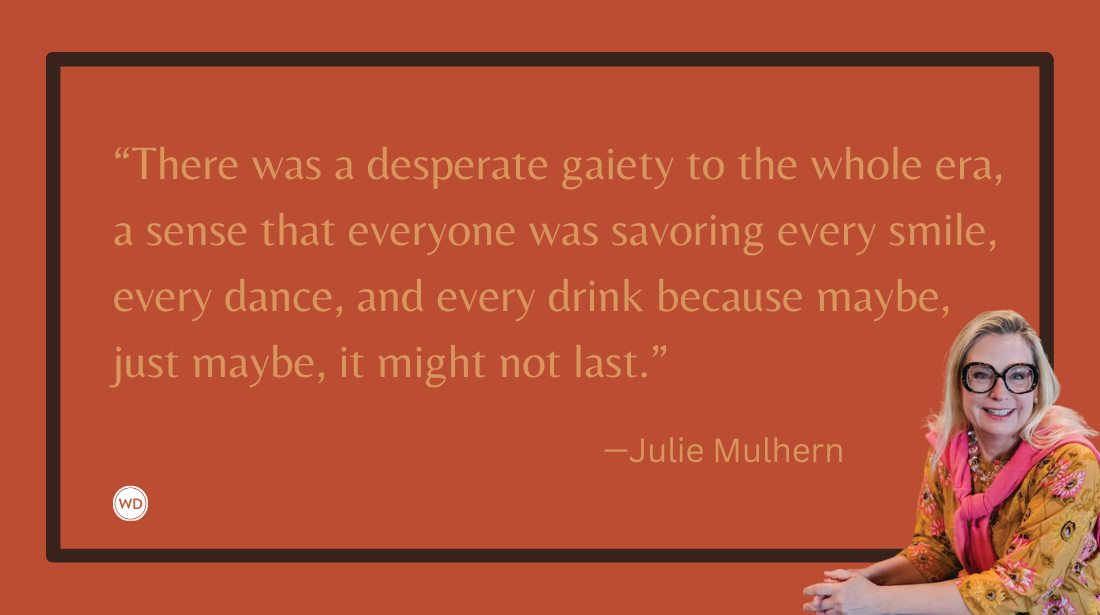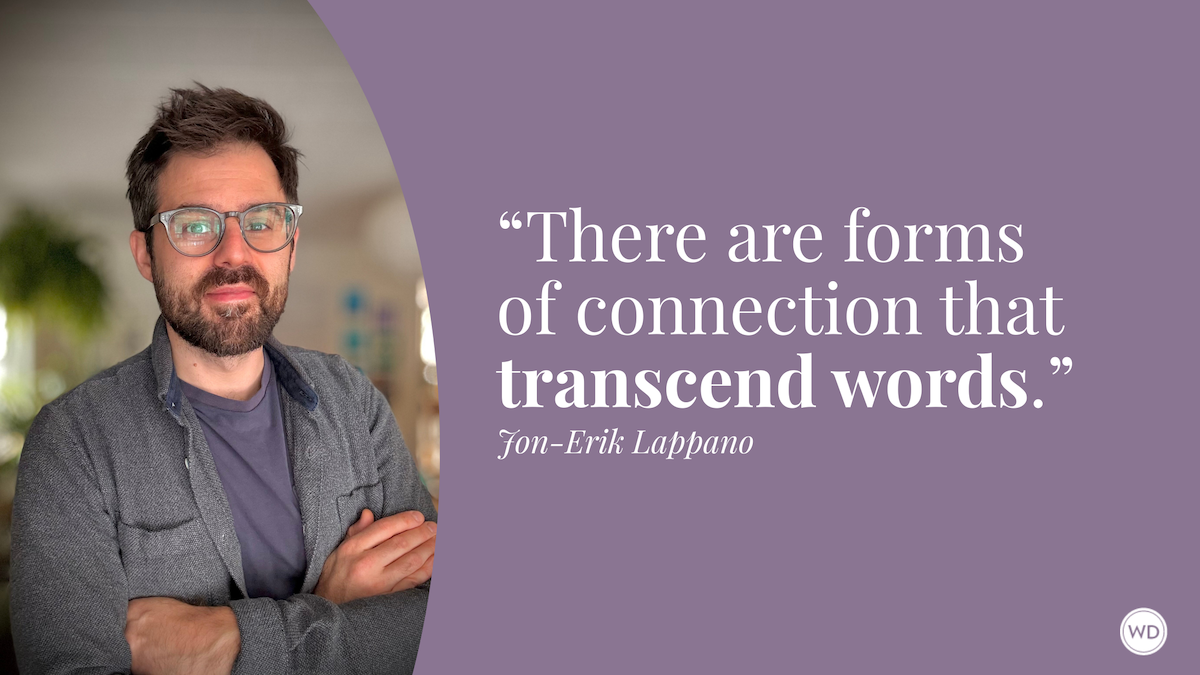Writing a Scene with Good Dialogue and Narration
Here’s how to explore the functions of dialogue and narration in a scene, so that you can find the mix that’s right for your novel.
People don’t always say what they mean or mean what they say. That’s true in real life and in fiction. Dialogue is not only about what is being said, but also about what is left unsaid. That is the playing field of narration: It shows us how people interact nonverbally. So, how do you strike a perfect balance between the two?
There is no ready-made formula for the right mix of narration and dialogue. Instead, let’s explore the functions of dialogue and narration in a scene, so that you can find the mix that’s right for your novel.
A Vehicle for Character
The way people speak and interact in a conversation says a whole lot about them. The words a character chooses can and should expose the character’s background, personality, and emotional status. The CEO of a multibillion-dollar company would choose different words than a military general, a stay-at-home mom, or a teenage girl. No need for lengthy character descriptions, if you choose the right words to put in your characters’ mouths.
But that’s only half of the story.
Drawing Relationships
By sheer definition, in a dialogue, at least two people interact: they exchange information, ask questions, answer them, comment, fight, tease… whatever. The way they interact with each other says a whole lot about their relationship. A teenage girl will speak and act differently when she talks to her BFF or a stranger, her teacher or her little sister or, God forbid, her mom.
*****
Dialogue can be one of the most interesting parts of a book to read, but only if it is done right. Sharpen your writing skills and challenge yourself to craft engaging, yet believable dialogue that will keep your readers interested. When you take this online writing workshop you’ll discover how to write dialogue that advances your story’s plot.
*****
Revealing Tensions
Small talk and happy talk—conversations where nothing goes wrong—are boring and have no place in fiction. When two or more people talk, tensions are bound to arise. The tension may be caused by conflicting motivations, by unspoken desires, by a difference in opinion, by hidden agendas, or by a bad day in the office. But it is there—and it is one of the most important functions of dialogue to reveal it. That’s what makes a scene sizzle and the sizzle is what ultimately moves the plot forward.
Let's look at a very simple example.
"Jane called me earlier today. She quit her job," Bob said.
"You mean our sister?" Regan replied.
This exchange tells us nothing more than that Bob and Regan are siblings, that they have a third sibling, Jane, and that she quit her job. That’s far too expository, far too obviously passing on factual information directly to the reader. In short, it’s nothing but a thinly disguised information dump.
Let's look at the same dialogue with just a few revisions.
"Jane called me earlier today. She quit her job," Bob said.
"Does mom know? If she hears that her favorite is out of a job, she'll freak out," Regan replied.
Here we still get the same information, namely that Jane is Bob and Regan’s sister and that she quit her job. But we get something more as well: We also learn that Regan feels that Jane is the mother’s favorite, which might indicate that Regan is a little jealous. In addition, we learn that the sister’s lack of a job may be an issue for the entire family, precisely because of the close relationship between Jane and her mother.
That’s one level of a scene—the level of spoken words. The narration steps in to reveal what the spoken words conceal.
Creating Atmosphere
Conversations should never take place in a vacuum. The narration needs to firmly ground your reader in time and space. But this does not mean that you should drown out your characters’ words with lengthy background information, scene descriptions, summaries, and commentary. Just like your dialogue cannot be a place to dump information, your narration can’t be either. Instead, your narration must support and enhance the spoken words of your characters.
Narration anchors the reader and creates the atmosphere of the setting and the specific circumstance of the scene.
Reading Between the Lines
Not haphazardly, of course, but in relation to what the scene is about. The narration needs to hint at or reveal the theme of your scene, which is to say that it needs to expose what’s going on between the lines. Quite literally so.
Let’s look how that might affect the scene between Regan and Bob.
"Jane called me earlier today. She quit her job," Bob said.
"Does mom know? If she hears that her favorite is out of a job, she'll freak!" Regan dropped her fork and knife on her plate with such force that the clatter turned heads at the nearby tables.
"Done eating already?" Bob asked as he leaned forward to inspect the plate for cracks.
"Why are you always taking her side?"
"I'm not," he said and waved off the waitress who had taken a few steps toward them, summoned by the commotion.
Illustrating Underlying Emotions
The short description in between the lines illustrates Bob and Regan’s behavior during the conversation, which in turn indicates their emotional status at the time. Regan is clearly upset, annoyed, frustrated. Bob is just as clearly trying to stay calm and in control of the situation. Bringing in the reaction of people other than the two dialogue partners, allows the reader to sense the ambiance of the setting, supporting the now even more obvious tension. The scene becomes a palpable. The reader is right there, watching, able to draw his or her own conclusions.
Driving the Plot Forward
The fact that Regan’s strong reaction almost broke her dinner plate and turned people’s heads at other tables could imply that Regan’s feelings may stir up or even break things in her family, too. The reader can’t help but wonder what’s going on in that family to cause such a strong reaction, and what may happen now that the reaction has been unleashed. Curious, the reader is ready to turn the page to see what happens next.
A writer’s job is to create a world that unfolds before the reader’s eyes. We want to hear people speak and see what they do, so that we may intuit what causes their behavior and where it might lead. With the well-tuned interplay of dialogue and narration, you can create scenes that sizzle with romance, suspense, excitement, or joy, engaging the reader in your characters’ plight.
WANT MORE? Check out Helga’s Writers Digest online tutorial:
More than Just Talk - Painting a Scene with Dialogue and Narration.
Watch the sneak peek above and then order here.
Helga Schier, PhD is a former Big Five editor and founder of withpenandpaper.com, an independent editorial services firm. With over 20 years of experience in the (self-)publishing industry, Helga guides authors through the development and revision process. Handling a manuscript like a diamond in the rough, Helga’s editorial work focuses on the refinement of story, character, and stylistic issues, helping writers unlock the potential of their manuscripts. She works with published, self-published, and not-yet-published writers of fiction and nonfiction. Helga has published essayistic works on contemporary English and American fiction, and has translated several screenplays, memoirs, and a novel series. She lives in Los Angeles with her husband and two children.









